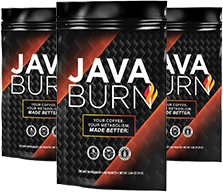Balanced eating is nice for everybody, however it’s particularly necessary for individuals dwelling with diabetes or different continual situations. The downside is that almost all nutrition recommendation within the U.S. is geared towards the bulk tradition, leaving of us from different food cultures to determine issues out on their very own.
That’s the place the “Honoring Different Food Cultures” initiative is available in. They’re working to shut that hole and make nutrition steering extra inclusive.
In this episode of the Off the Charts podcast, you’ll hear from two members of the initiative: Dr. Yeng Yang, a regional director of main care and co-chair of the Health Equity Cabinet, and Munira MaalimIsaq, a household nurse practitioner.
Dr. Yang and Munira speak about why culturally responsive training issues, and the way they helped create supplies that meet individuals the place they’re, exhibiting that even white rice will be a part of a healthy food regimen. Listen to the episode or read the transcript.
Noticing that nutrition recommendation misses the mark
“This has been a project that has been long in the making, long in the dreaming, really,” Dr. Yang says.
As a main care physician, she started to note that sufferers from different cultural backgrounds weren’t getting the help they wanted when it got here to managing diabetes, high blood pressure or different continual situations. Even once they had been referred to a diabetes educator or nutritionist, the recommendation didn’t all the time join. A major purpose appeared to be that the steering didn’t take their food cultures under consideration.
Dr. Yang recollects, “They come back, and they say, ‘That doesn’t work, because none of the food they show me on those pictures look like the food I eat at home.’”
Not solely that, however these sufferers had been typically instructed that they shouldn’t eat sure meals which can be mainstays of their food regimen, together with white rice. And that, in Dr. Yang’s opinion was not okay.
Honoring the cultural significance of white rice
“Rice is life for us,” Dr. Yang says, talking as a part of the Hmong group. “And rice is life for many, many, many cultures across the world.”
For some, white rice isn’t only a dietary staple, but additionally a part of identification. And even when instructed that brown rice has extra dietary worth than white rice, it’s not a swap that they’re prepared to make.
Dr. Yang explains that, in some communities, brown rice is considered as food for the much less lucky. On the opposite hand, white rice is seen as a premium product or image of standing.
“Because of some of those social stigmas that are culturally relevant, you tell people, ‘go eat brown rice,’ that’s a problem,” Dr. Yang says. “They might smile at you and say, ‘sure.’ But they’re going to go home and not do it … they’ll just substitute white rice.”
Taking steps to honor different food cultures
The “Honoring Different Food Cultures” initiative (nicknamed the “White Rice is Okay” group) was shaped in 2023. Supporting this initiative is a cross-functional workforce that features main care, diabetes training, nutrition companies, high quality and affected person training.
Early on, the group had listening classes with individuals from the Somali, Hmong and Ethiopian communities. The aim was to “get their perspective and make them the center of what we wanted to change,” says Munira.
During the listening classes, individuals famous that the academic supplies used to point out balanced eating tended to incorporate food decisions from a western food regimen (for instance, skinless rooster breast, broccoli, mashed potatoes, strawberries and a glass of milk).
“That’s when they pointed out to us that, ‘Well, I don’t recognize that food. Like, you can teach me how to portion mashed potatoes, but I’m going to go home and eat rice. You can teach me how to portion whatever fruit, but I’m going to go home and eat mango or dates,’” says Dr. Yang.
Helping sufferers visualize balanced food decisions
The workforce was impressed to assist individuals from different cultural backgrounds see how the meals they know and love may match right into a healthy food regimen.
The MyPlate guidance from the U.S. Department of Agriculture served as an inspiration for how you can visually present this data. The icon for MyPlate incorporates a plate separated into sections for greens, fruits, grains and protein with a cup for a serving of low-fat dairy on the facet. While MyPlate is meant to be easy and versatile, it may be difficult for individuals of different food cultures to steadiness food decisions, primarily based on what’s typical of their diets.
Working alongside group members, the workforce developed “Healthy Eating with My Meal,” handouts that present examples of culturally acceptable meals within the proportions which can be really useful for a healthy food regimen. All the data on the web page has been translated, permitting individuals to learn the data of their native language or English.
For instance, the My Meal handout for the Hmong community (PDF) leads with pork and mustard greens soup, then goes on to point out culturally related examples of nonstarchy and starchy greens, grains, proteins, fruits and dairy merchandise (or dairy alternate options). Instead of lettuce, there’s chayote. Instead of potatoes, there’s candy potatoes. And as you’ll be able to guess, white rice is likely one of the grains that’s listed.
“Because this is designed to be culturally appropriate for them, they will immediately recognize their food,” stated Dr. Yang. This spurs the dialog about what they often eat, and if the food isn’t presently represented, it may be added to the handout. And when the sufferers take the handouts dwelling, they’ve a visible information to assist them make balanced decisions to help their health.
Referring to the My Meal handout for the Somali community (PDF), Munira says, “For my community that does not eat a lot of vegetables, this was a good conversation starter when it came to how much vegetables are important, and fruits are important – and how do you integrate that in the meal.”
Along with the My Meal handouts accessible in Somali and Hmong, there are additionally Somali-language movies and audio recordings to help diabetes training. To make entry simpler, QR codes linking to those assets will be added to after-visit summaries. Plus, the movies are included on hospital menus, serving to sufferers make balanced food decisions that help their health. The workforce hopes to create extra supplies, together with ones for different food cultures.
A recipe for pleasure and higher health
“The data tells us that when people trust us, when people understand and identify with the education and the care that we give them, that they are more engaged and they feel more empowered,” stated Dr. Yang.
Munira recollects an early expertise of sharing the My Meal handout. “I remember the first time I pulled it out for a patient; she just takes it out of my hand … and she hugs it. She’s like, ‘This is for us, this was made with us in mind.‘”
Dr. Yang says that there are effectively over 100 randomized trials exhibiting the optimistic influence of culturally responsive training for diabetes. The major takeaway is that whenever you present that you just perceive and supply culturally acceptable steering it permits individuals to assist themselves.
“And that leads to better glycemic control and hopefully better outcomes in terms of decrease in complications, which is ultimately what we want,” says Dr. Yang.
Setting the desk for culturally responsive steering
Now that dietary suggestions will be supplied in a means that’s simpler to digest, the query is how you can get extra individuals to feast on that data.
Right now, these instruments are largely utilized by our diabetes educators, nutritionists and a small variety of main care clinicians. But given the profound influence that these instruments appear to have on affected person care, Dr. Yang and Munira are hoping to see them in additional widespread use. While the supplies can be found to all HealthCompanions clinicians, Dr. Yang says that it’s typically greatest to refer sufferers to a licensed diabetes educator or a nutritionist.
“Why I harp so much about seeing the diabetes educator is because it’s really a partnership between a primary care clinician and our diabetes education team,” says Dr. Yang. “We have really good evidence to show that when we actually work in partnership, we produce better results for our patients. Our patients go home faster, they stay at goal longer, and that’s really ultimately what we want.”
But getting somebody related with a diabetes educator or nutritionist isn’t all the time simple. Results from a survey of HealthCompanions main care clinicians and endocrinologists confirmed that clinicians can generally be not sure of how you can greatest present steering to individuals of different food cultures.
“Clinicians who may not do this work a lot or may not see these kinds of patients a lot, they’re afraid to offend people, and they may not ask the right questions,” says Dr. Yang.
To assist, the workforce developed a useful resource to assist clinicians know the way and when to refer individuals of different food cultures for diabetes or dietary training. Some key suggestions embrace acknowledging affected person considerations, practising cultural humility, sharing data and ensuring to observe up.
To Munira, follow-up is particularly necessary. She feels it’s important that you just let your sufferers know that you just’re not simply passing the buck. Instead, it ought to be a heat hand-off the place you’re saying, “I trust this person, and this is someone that you will have longer time with, and everything gets sent back to me, and I’ll review it.”
Serving up modifications that heal individuals and assist communities
“Many of our patients from these different food culture communities, they are really afraid of medicine,” says Dr. Yang. “But food is so fundamental … and when you can actually lead with food, rather than leading with medicine, it goes a long way to build that trust.”
What’s extra, the optimistic expertise and health outcomes of 1 person has the potential to make optimistic waves all through a group.
Munira says that for individuals within the Somali and Hmong communities, “whatever we learn, we’re teaching other people and sharing with our community members. Something like this, I can see it having a big impact on a whole family and even communities.”

















Discussion about this post